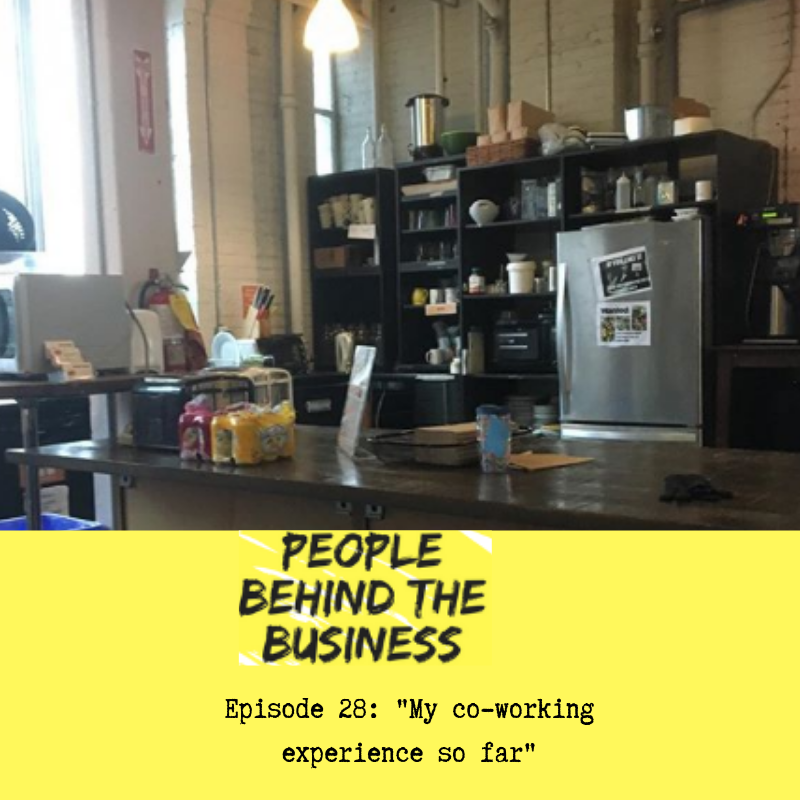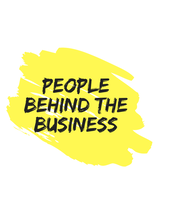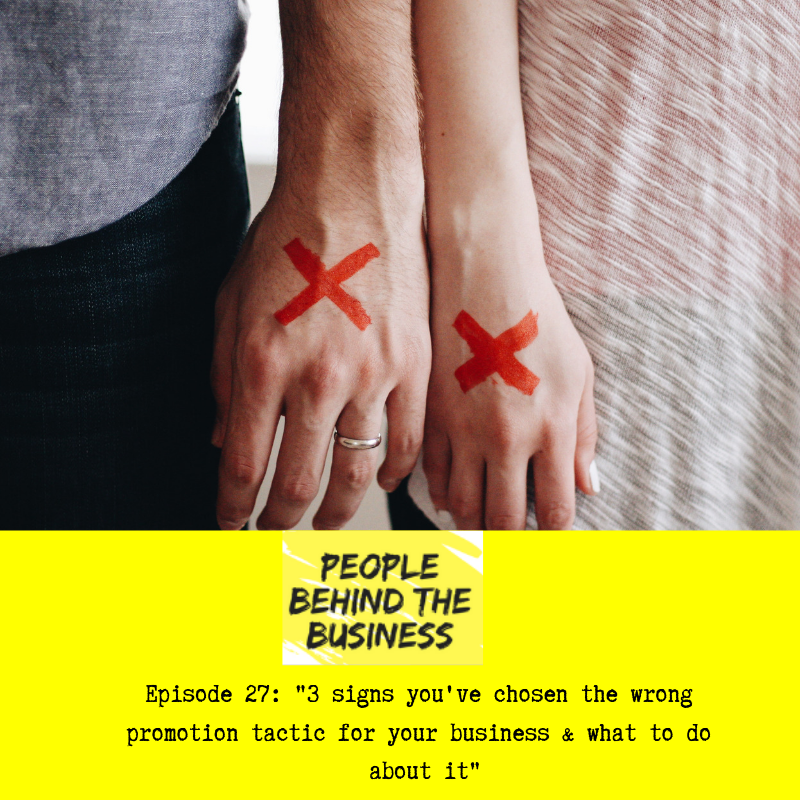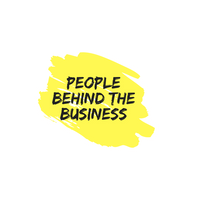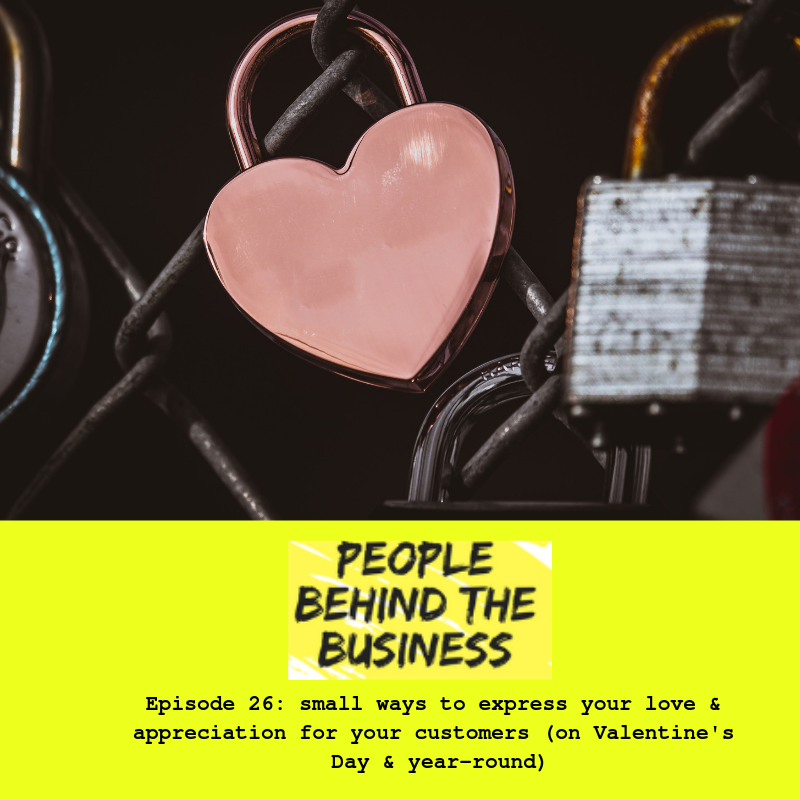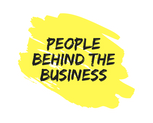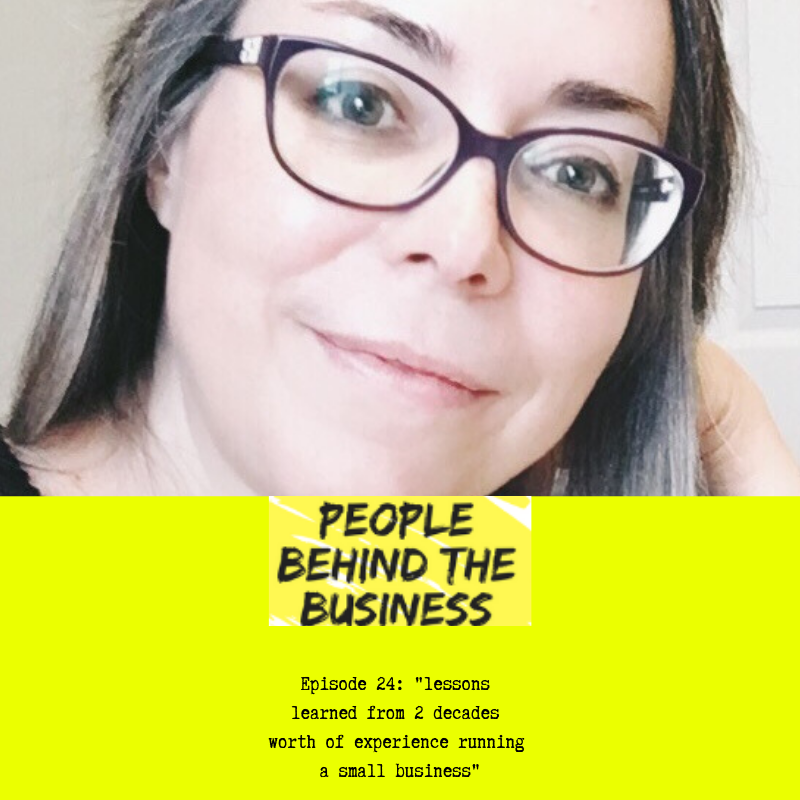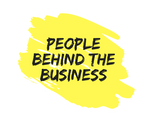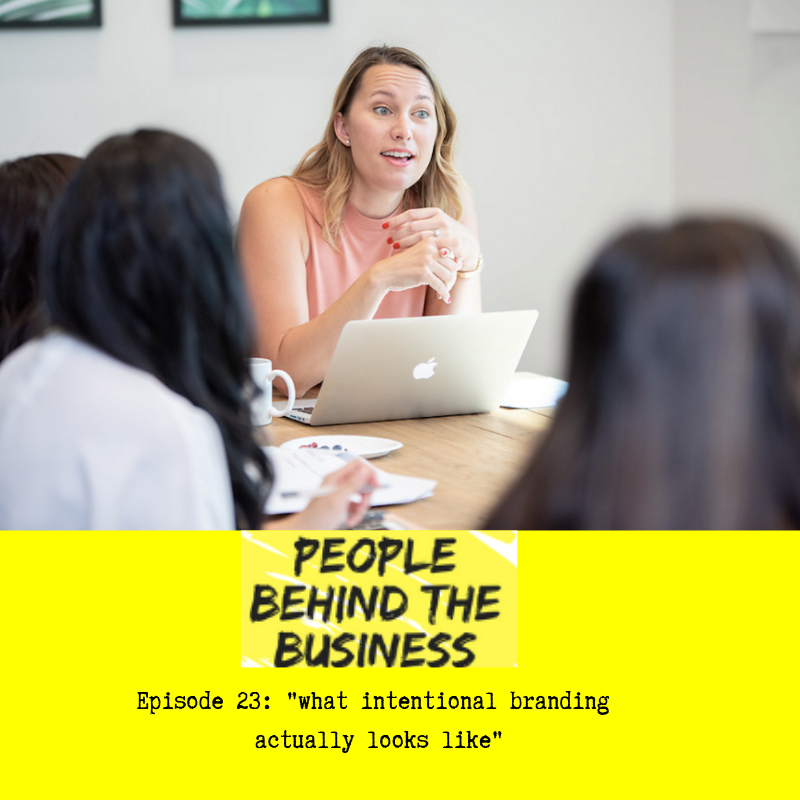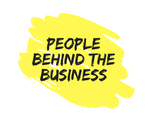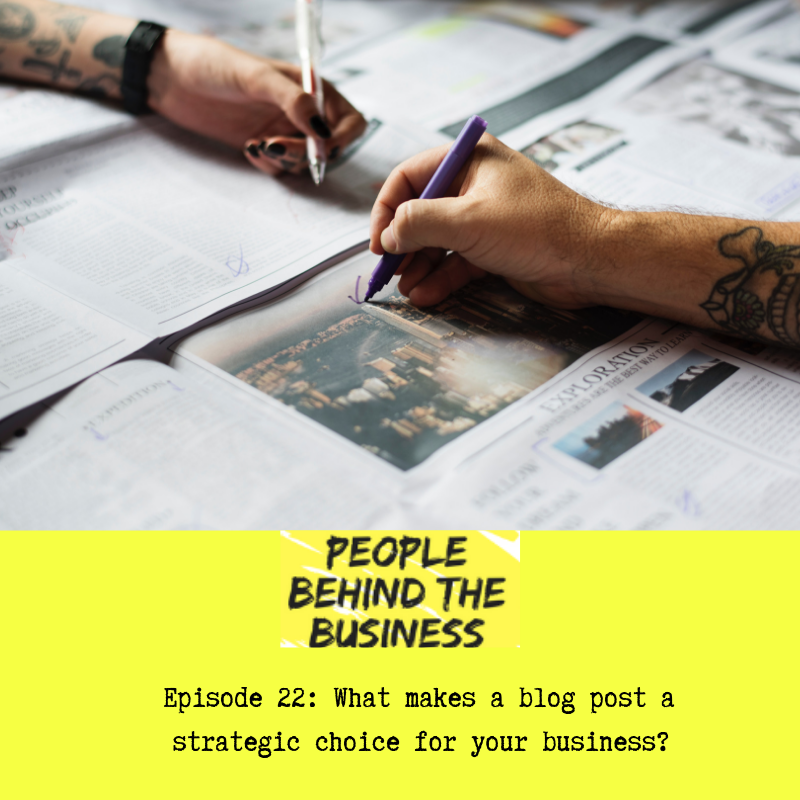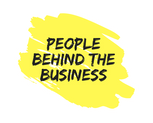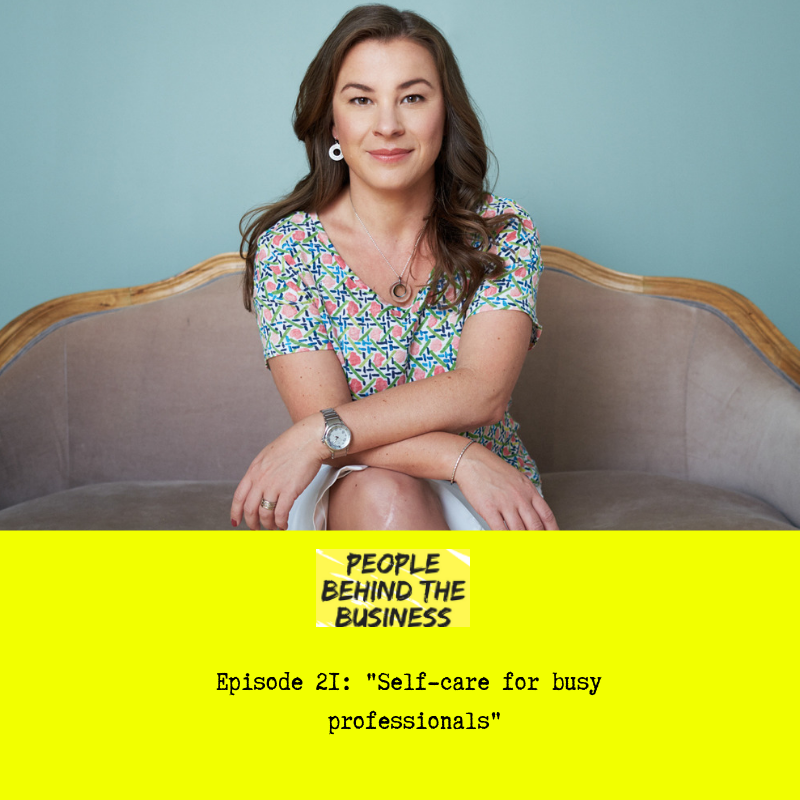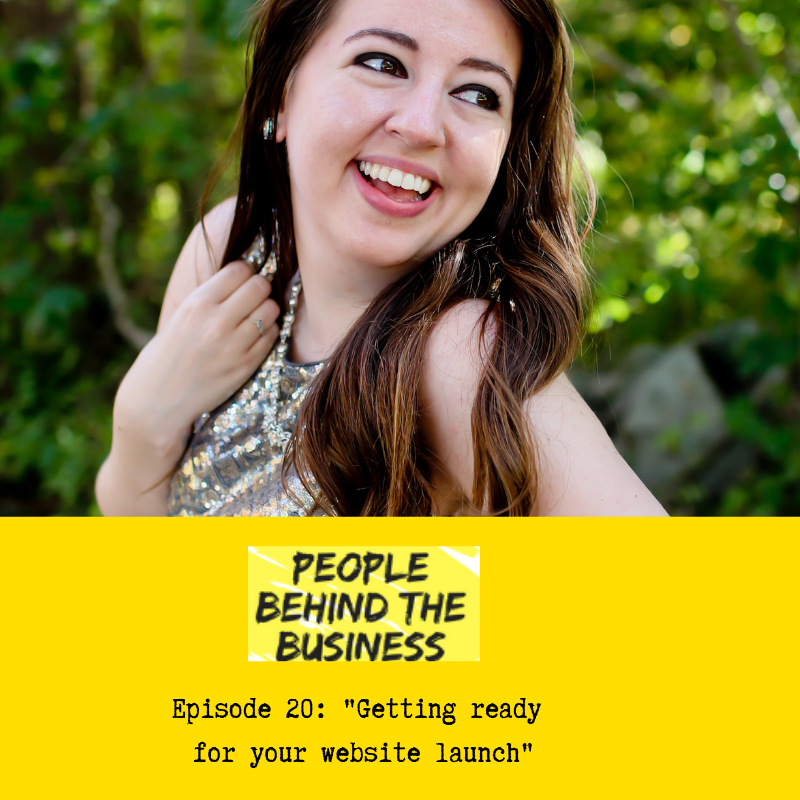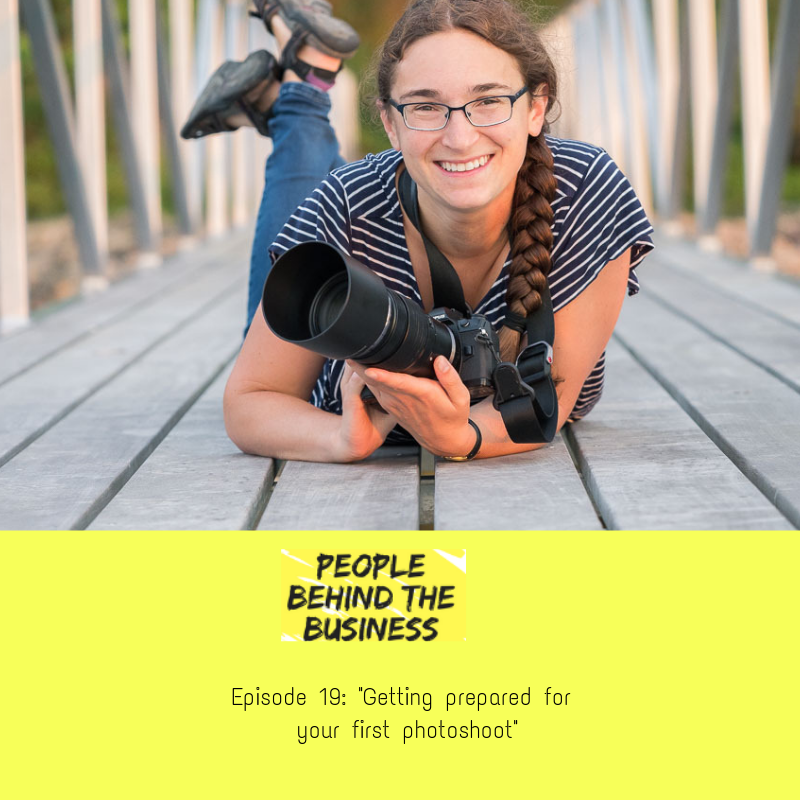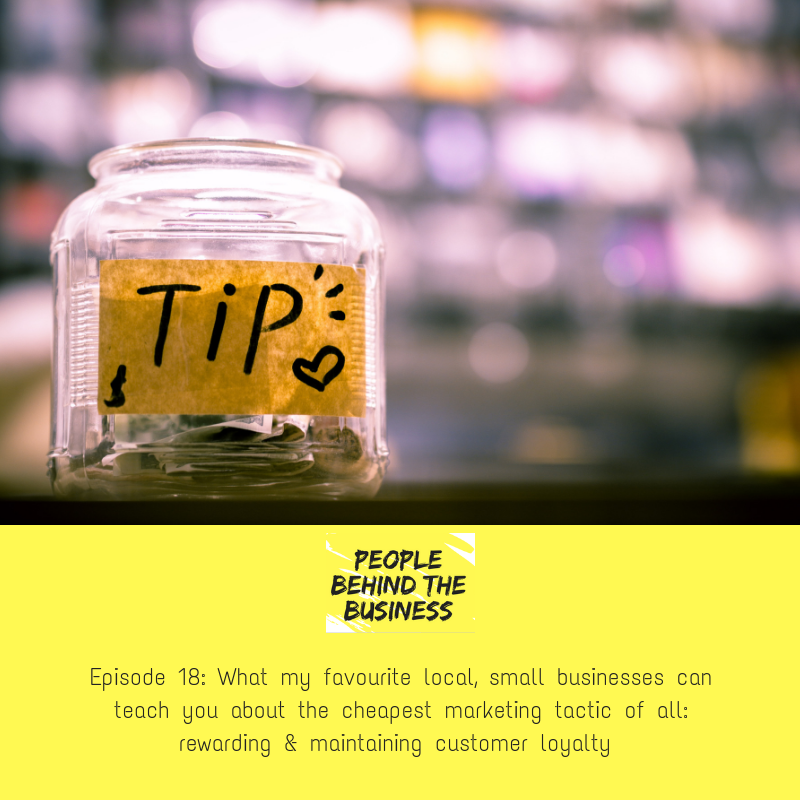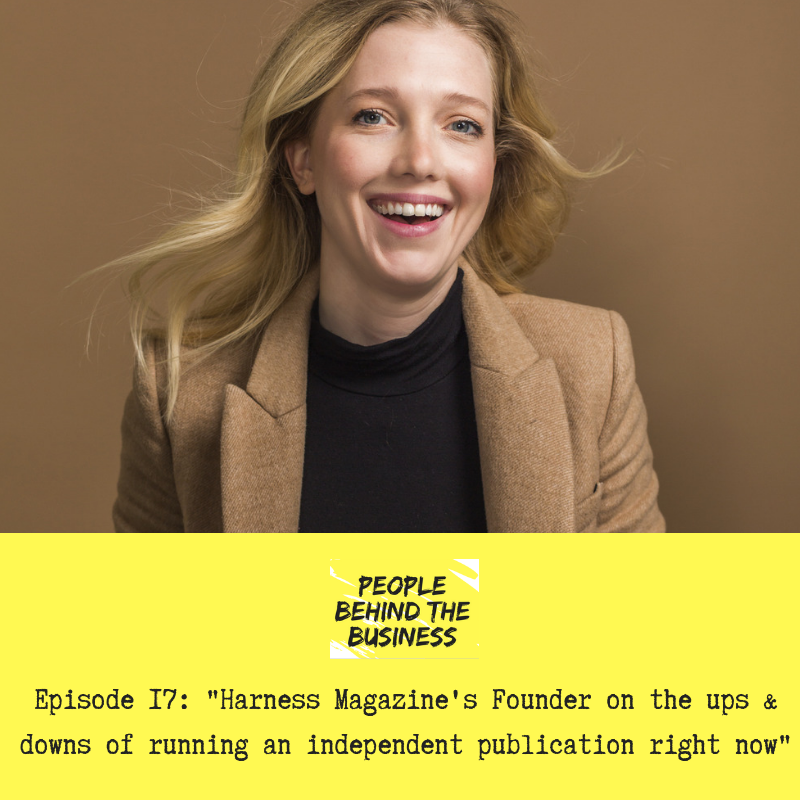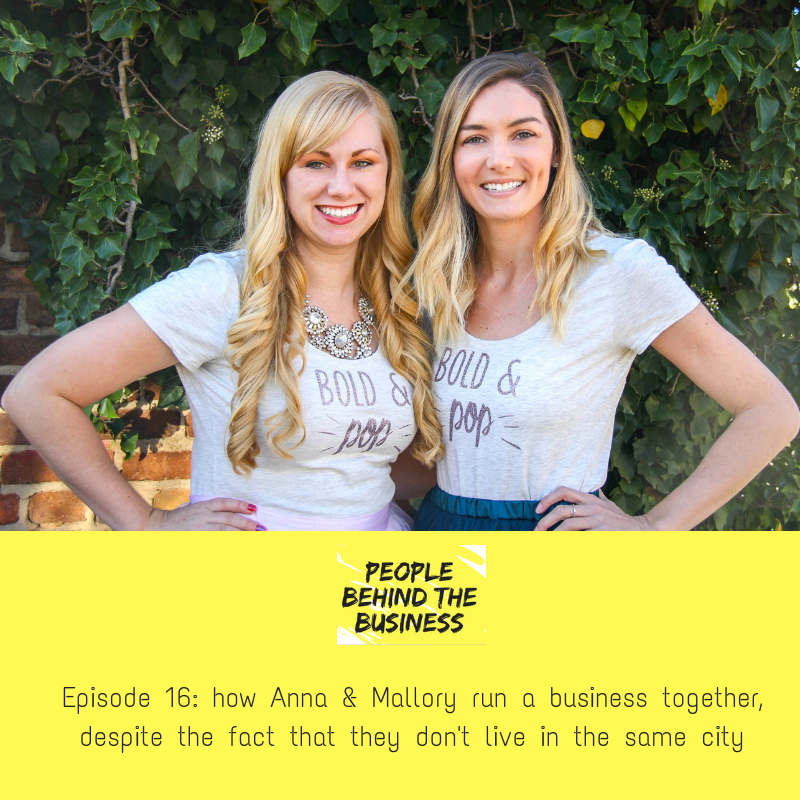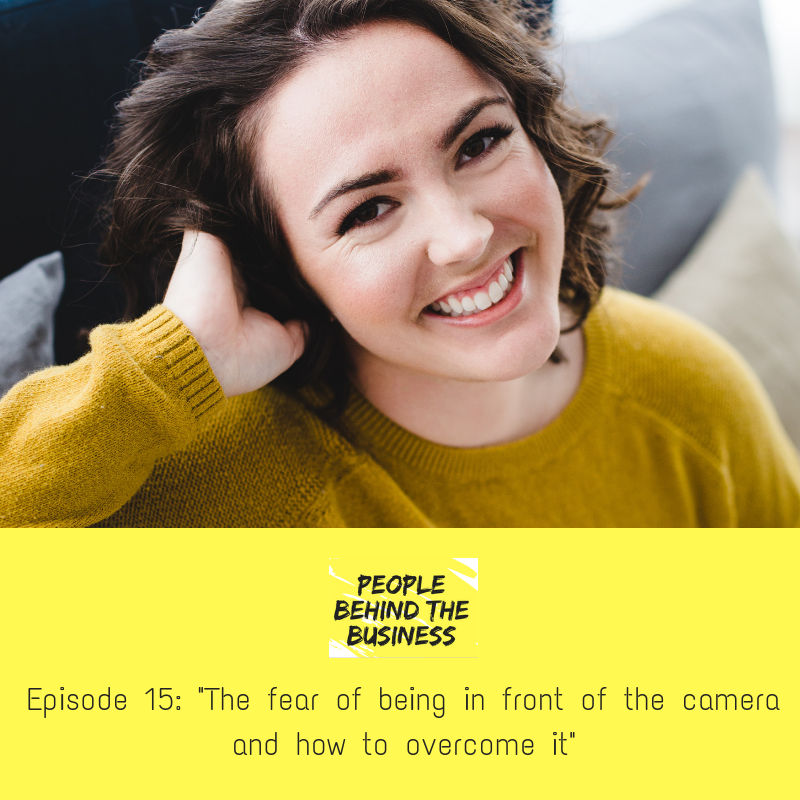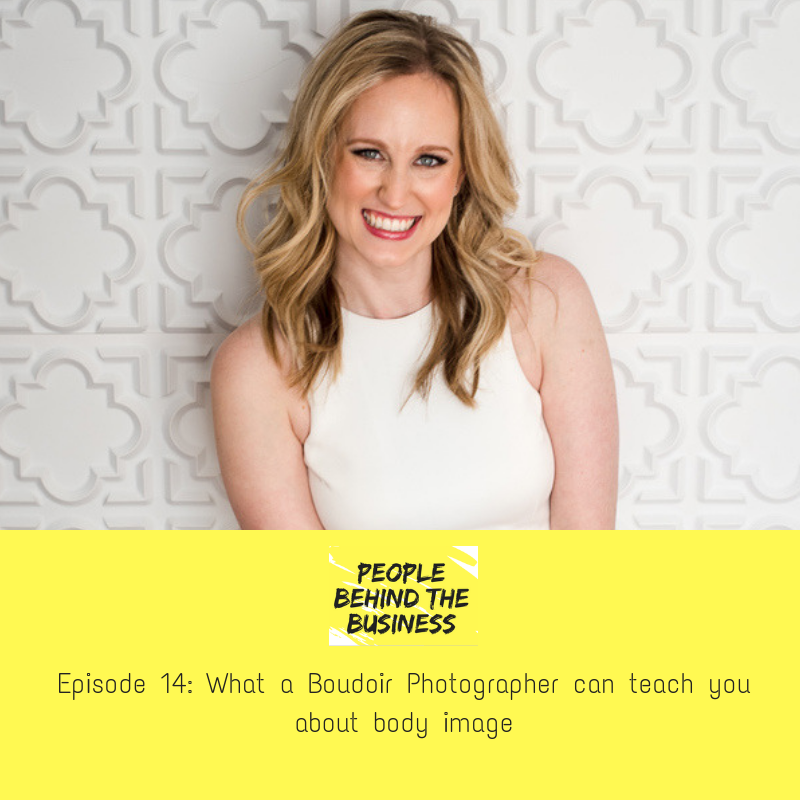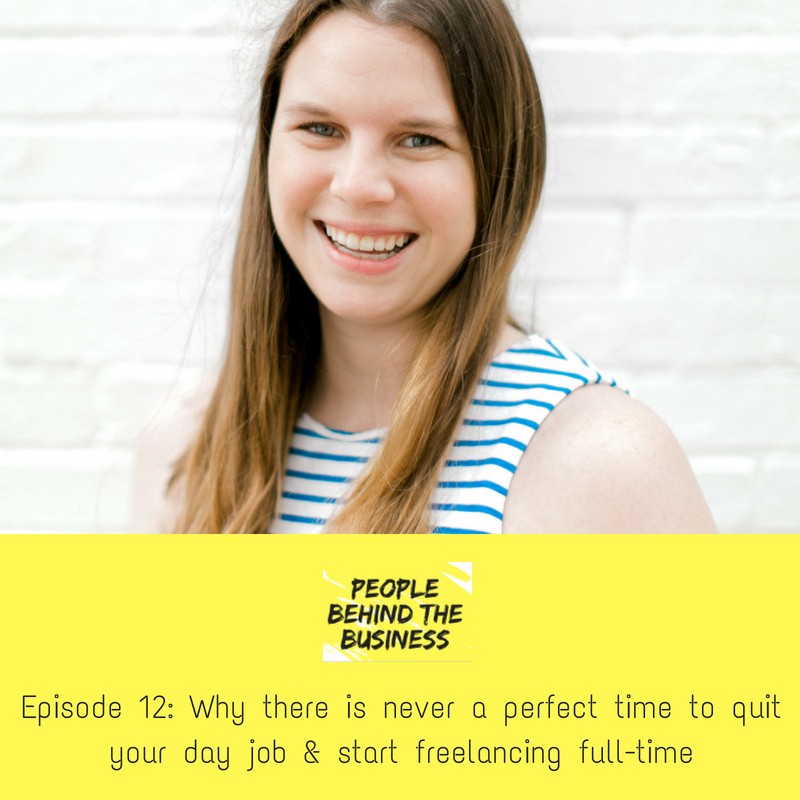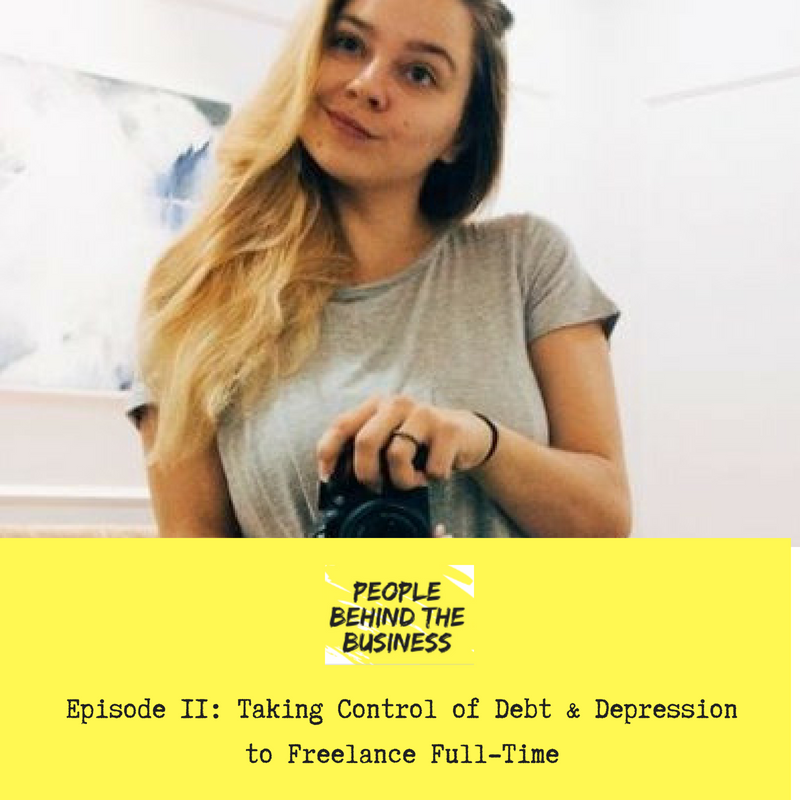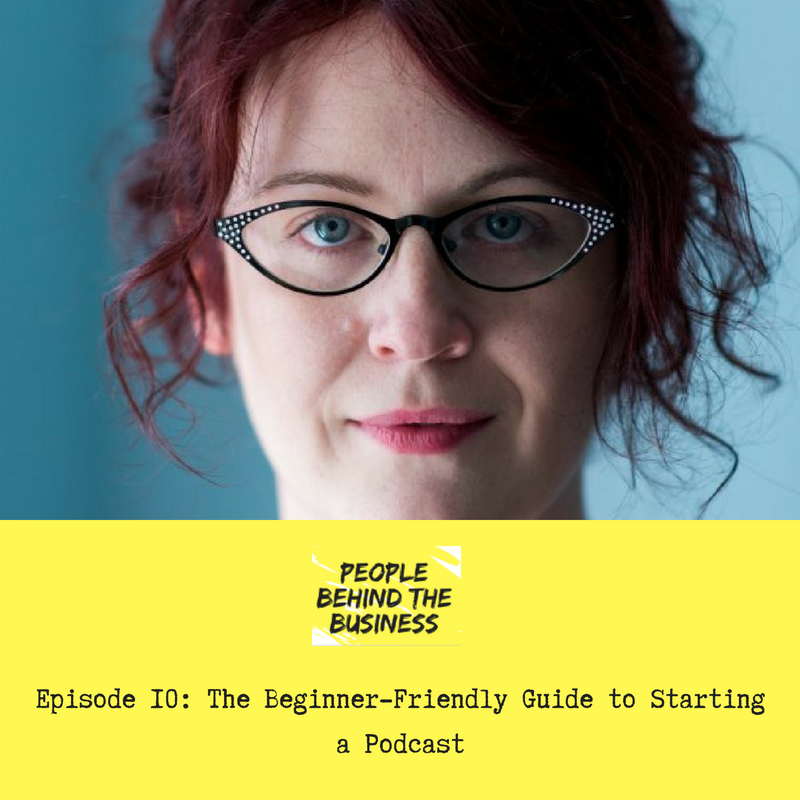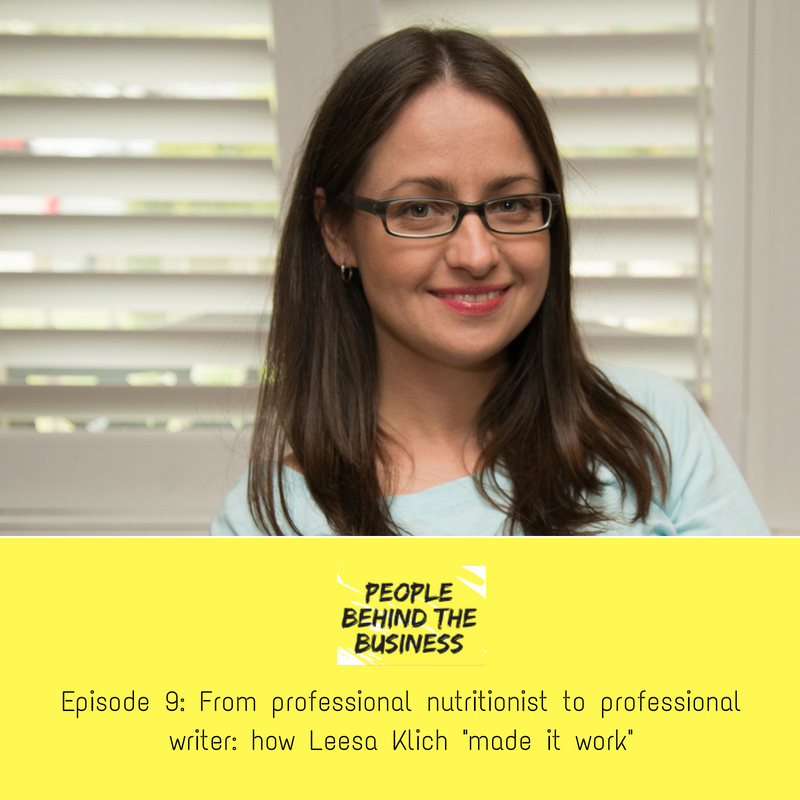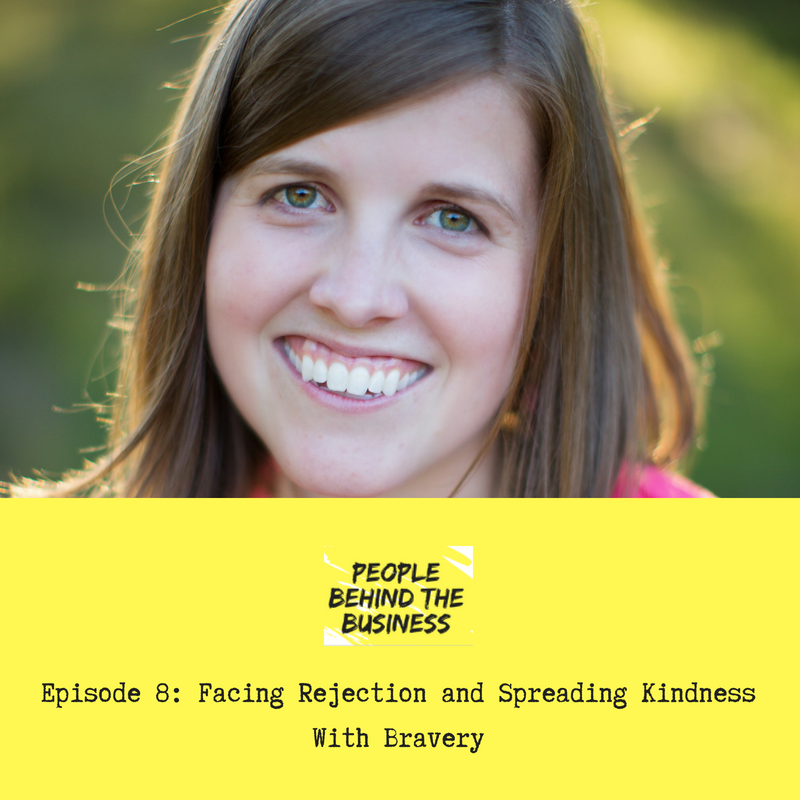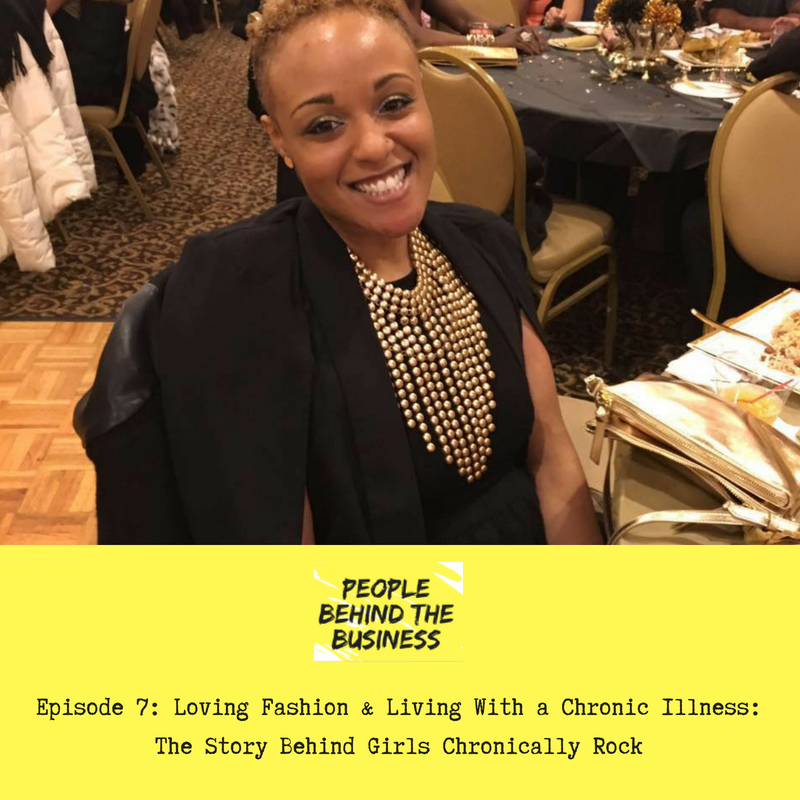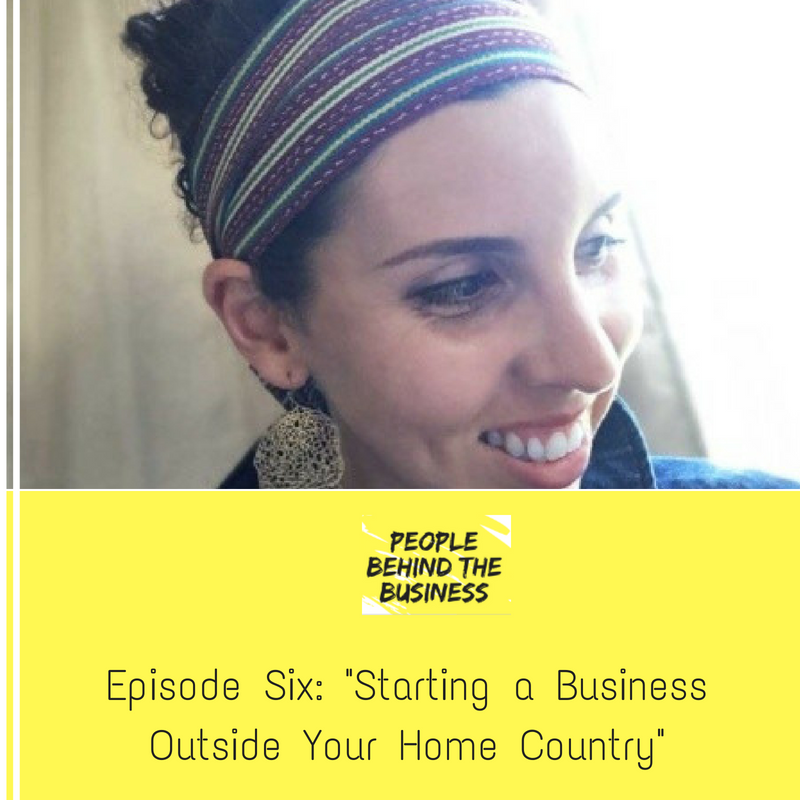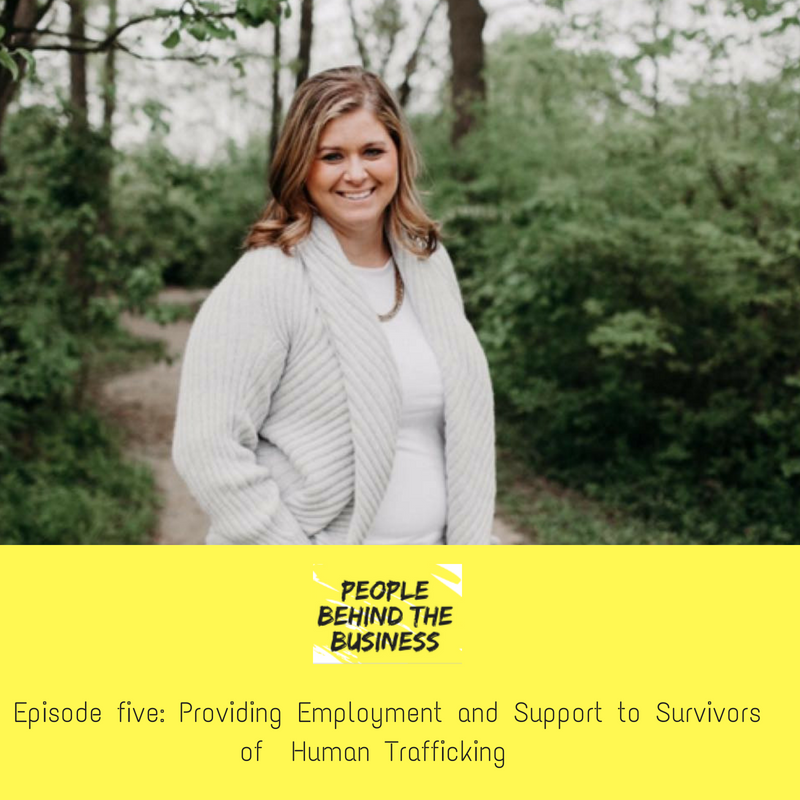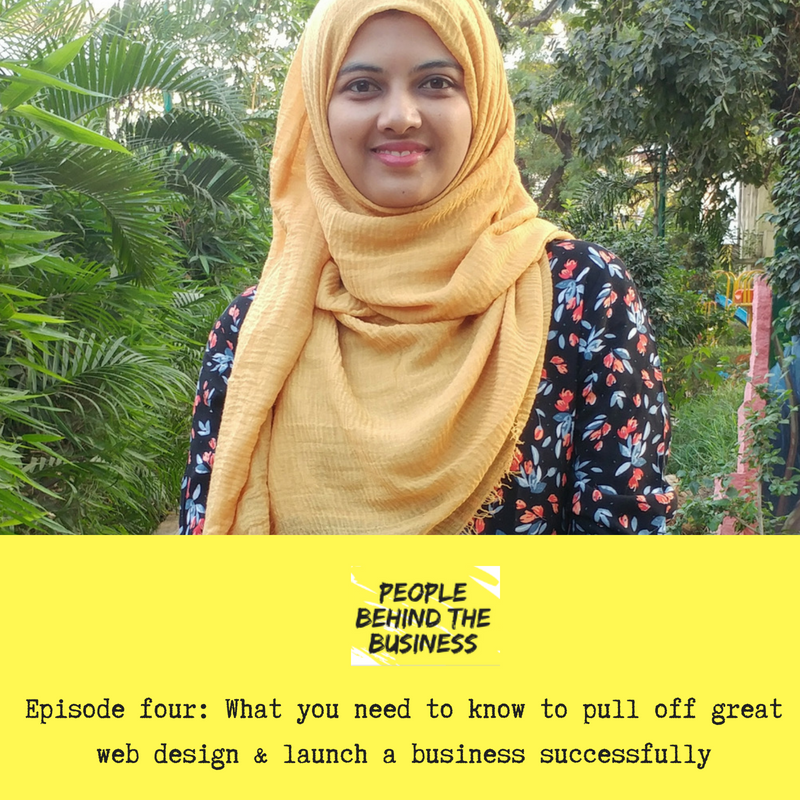Show notes:
Hey, I’m Rosemary Richings, a specialist in blog content promotion and audience outreach strategy. I help E-Commerce and retail brands, driven by their love of improving the lives of their community reach their target audience in a meaningful way. This involves offering blog content creation & web page copywriting services, along with editing and blog content strategy services, which challenge clients to look at their content as something they can use to offer value over the long-term. My work has been featured on sites such as Buffer and Search Engine Journal, and I have worked with clients such as Yellowpages Canada and E-Bay. My blog, Rosie Writing Space, and podcast, People Behind the Business, are dedicated to providing practical advice for people who are “putting themselves out there” in the digital space. I am based at the Centre for Social Innovation in Toronto, Canada. How you can follow this podcast (and learn more about its host) Get podcast news and updates in your inbox Check out my website
0 Comments
Show notes
Check out my blog post: “Why you need to limit the reach of your online platforms & how to get iron-clad results”. About me I specialize in blog content promotion and audience outreach strategy. My work has been featured on sites such as Buffer and Search Engine Journal, and I have worked with clients such as Yellowpages Canada and E-Bay. My blog, Rosie Writing Space, and podcast, People Behind the Business, are dedicated to providing practical advice for people who are “putting themselves out there” in the digital space. I am based at the Centre for Innovation in Toronto, Canada. For more info about my work, check out www.rosemaryrichings.com. How you can follow this podcast (and learn more about its host) Get podcast news and updates in your inbox Check out my website Small ways to express your love & appreciation for your customers on Valentine's Day & year-round2/14/2019
Just in time for Valentine’s Day, here’s an episode where I share some ways that business owners have shown and continue to their love and appreciation for their customers. I believe that it’s the little things that count when it comes to expressing your love and appreciation. And many of the examples discussed in this episode are proof that I’m not the only one who thinks that way.
What this episode covers:
For even more insight on this topic… Check out my blog post: “My local tea sommelier’s sales process & how it makes an impact”. About me I specialize in blog content promotion and audience outreach strategy. My work has been featured on sites such as Buffer and Search Engine Journal, and I have worked with clients such as Yellowpages Canada and E-Bay. My blog, Rosie Writing Space, and podcast, People Behind the Business, are dedicated to providing practical advice for people who are “putting themselves out there” in the digital space. I am based at the Centre for Innovation in Toronto, Canada. For more info about my work, check out www.rosemaryrichings.com. How you can follow this podcast (and learn more about its host) Get podcast news and updates in your inbox Check out my website Getting featured on credible blogs & cold pitching businesses: increasing your chances of success1/24/2019
Self-Care for Entrepreneurs: Why it's about a lot more than just scented candles and bath bombs12/13/2018
I think, when it comes to running a small business, we talk a lot about the work aspect a lot but the one thing we don’t talk about enough is self-care. And I’m not talking about a cliché version of the word “self-care” that involves bath bombs and scented candles (despite the fact that all of the above are quite nice). I’m talking about just how important it is to take your own health and well-being seriously as the work that you produce for your clients/ customers every day. That’s exactly why I asked a nutritionist that works with busy, professional women to be a guest my show so that we could talk about how entrepreneurs who lead hectic lifestyles can squeeze time into their busy schedule for self-care.
What this episode covers:
Gaylene Gomez is a Certified Holistic Nutrition Coach for women and Owner of Compass Rose Nutrition and Wellness. She helps busy, professional women lose weight and reduce bloating with simple lifestyle changes, so they can have more energy and confidence. Where you can find Gaylene online: Website: https://www.compassrosenutrition.ca/ Facebook page: https://www.facebook.com/CompassRoseNutrition/ Pinterest: https://www.pinterest.ca/CRoseNutrition/ Instagram: https://www.instagram.com/compassrosenutrition/ Free Nutrition Resource Library: https://www.compassrosenutrition.ca/nutrition-resource-library How you can follow this podcast (and learn more about its host) Get podcast news and updates in your inbox Check out my website
Because I realize that not “all” of my listeners have pulled the trigger, and launched their business, I thought it would be a great idea to have a website launch expert on the show. In fact, this episode answers a very important question: What makes a website “launch-ready”? And what if you’re not yet at the point where you can outsource your website copywriting and design to a freelancer? What are the absolutely essential components that you need to attract clients?
What this episode covers:
Where you can find Liz online: Check out her website: https://liztheresa.com/ Like her Facebook Page: https://www.facebook.com/liztheresa Listen to her podcast: https://liztheresa.com/podcast-archive/ Sign up for her copy masterclass: https://copymasterclass.com/ How you can follow this podcast (and learn more about its host) Get podcast news and updates in your inbox Check out my website
Never participated in a photoshoot or hired a photographer before? Not really sure how to prepare or what to tell your photographer? Consider this episode to be your pre-photoshoot guide to approaching the experience with confidence.
Because chances are you’ll need photos that look professional for your website, brochure, etc. at some point! What this episode covers:
About Mira: Mira is a portrait photographer living just outside Boston with her husband and three kids. Mira works with families and individuals who want updated portraits, striving to make everyone more comfortable in front of the camera. She is the recipient of the #1 Readers’ Choice Award and HulaFrog’s Most Loved Family Photographer Award and has placed as a finalist twice for the Boston A-List Best Photographer award. When she isn’t behind the camera, Mira enjoys spending time with her family, knitting, and cooking. Where you can find Mira Online: Visit her website: http://mirawhitingphotography.com/ Like her Facebook page: http://www.facebook.com/mirawhitingphotography Follow her on Instagram: http://www.instagram.com/mirawhitingphotography How you can follow this podcast (and learn more about its host) Get podcast news and updates in your inbox Check out my website
Think marketing is too expensive or complicated? This episode will change your point of view. Because I looked at things from the point of view of the loyal customer. This involves analyzing examples of wonderful things my favourite small businesses have done in the past to keep me coming back for more.
Because building trust and loyalty isn’t just cheap. It’s also one of the most powerful forms of advertising. What this episode covers:
About me I specialize in blog content promotion and audience outreach strategy. My work has been featured on sites such as Buffer and Search Engine Journal, and I have worked with clients such as Yellowpages Canada and E-Bay. My blog, Rosie Writing Space, and podcast, People Behind the Business, are dedicated to providing practical advice for people who are “putting themselves out there” in the digital space. I am based at the Centre for Innovation in Toronto, Canada. For more info about my work, check out www.rosemaryrichings.com. How you can follow this podcast (and learn more about its host) Get podcast news and updates in your inbox Check out my website Harness Magazine's founder on the ups & downs of running an independent publication right now10/18/2018
Ever dreamed of starting your own independent publication? Not sure what it takes to get readers, subscribers, advertisers, and contributors to participate?
Recently, I spoke to Ashley Rector, the founder of Harness magazine about the good, crap, and totally awesome parts of starting and running your own magazine in a digital age. If you have a great idea for an independent publication but are worried about its financial sustainability, there’s a lot you can learn from Ashley’s story of how she builds Harness from scratch. On this episode, you’ll learn exactly what it takes to run a successful independent publication. What this episode covers:
About Ashley Rector, this week’s guest Ashley Rector is a small business and passion coach, attorney and the founder of Harness Magazine. Harness is a digital and print publication dedicated to empowering women through creative expression. Simply put, Harness publishes the articles, artwork and poetry from real women around the world. Where you can find Ashley Online:
How you can follow this podcast (and learn more about its host) Get podcast news and updates in your inbox Check out my website
Finding the right co-founder is one thing, but what do you do when you also live in two different cities and time zones?
On this week’s episode, I talked to two friends who successfully made living in two different cities, while running a business together actually work. Here’s your chance to learn how Anna and Mallory of Bold and Pop developed a system for everything from dividing up the work, to keeping the lines of communication open with their clients. What this episode covers:
About Bold and Pop/ Anna & Mallory Anna Osgoodby & Mallory Musante are the Co-founders behind Bold & Pop and are based in Seattle, WA and Raleigh, NC. Together, they specialize in working with other lifestyle entrepreneurs and small businesses to reach their goals by launching engaging social media and influencer marketing campaigns as well as building brands from the ground up through logo, branding and website design. They also host a blog series and Facebook group called the #BoldBossTribe that is focused on supporting fellow business owners, bloggers and side hustlers. Where you can find Bold and Pop Online: · Website: https://boldandpop.com/ · Facebook: https://www.facebook.com/boldandpop · Twitter: https://www.twitter.com/BoldandPop/ · Instagram: https://www.instagram.com/boldandpop/ · Pinterest: https://www.pinterest.com/boldandpop/ How you can follow this podcast (and learn more about its host) Get podcast news and updates in your inbox Check out my website
Did you know that one third of online activity is spent watching videos? And chances are you’ve heard numerous others stress the growing popularity of video marketing as well. But what if you’re either super camera shy, and not all that great at talking in front of a crowd of strangers? Do you need to be on video as well? Well…a lot depends on who you’re trying to reach.
So, if being on camera proves to be a necessary evil, and it terrifies you this episode is for you. In this episode, I talked to a visibility expert who works with the types of people you won’t see presenting at conferences or doing Ted Talks. However, they have something worthwhile to share, and want to reach a lot of people quickly. So, they hire Erin, this week’s guest to make sure they’re put themselves out there in a flattering way. In this episode, two people who know what it’s like to feel awkward on camera: myself and my guest talk about how you can overcome your fear of being on camera. What this episode covers:
About Erin: Erin P.S. Zimmerman is the owner of EZ Visibility, where she serves as the Visibility Guide, helping marginalized women create fun, sustainable action plans to grow their businesses and make a name for themselves with ease. A graduate of the University of San Diego, Erin majored in Communication Studies and Leadership. She has worked on the marketing and production teams for a Top 10 movie theatre chain, Take 2 Production Company, the Kansas City Chiefs NFL team, and co-founded DoubleTake Productions, a photography and videography company, with her twin sister. When she first escaped her 9-5, she served her clients as a social media consultant. Erin has helped her clients create courses, write books, start podcasts, and even leave their 9-5 jobs. She has been featured in The Huffington Post, and on podcasts like Grief: A Love Story, Women’s Side Hustle Society, and The Know Like & Trust Show, and is a regular guest on KCTV5’s Better Kansas City. Erin is also the President of Kansas City Women in Film and Television and serves on multiple film and media boards in the area. She currently resides in Kansas City, Missouri with her husband. Where you can find Erin Online: https://www.facebook.com/groups/EZvisibilityLounge/ https://www.instagram.com/ezvisibility/ www.ezvisibility.com How you can follow this podcast (and learn more about its host) Get podcast news and updates in your inbox Check out my website
At some point in your business, you’ll find yourself having to go in front of a camera. This can be extremely terrifying if you’re not used to it.
Especially if you struggle with insecurities about either the way you talk or some part of your body. That’s exactly why the next two episodes are conversations in two parts with a photographer, and a visibility specialist. Welcome to part one of this series where I talk to a professional boudoir photography about how she builds trust and helps her clients overcome their insecurities about their bodies. For those of you who are unfamiliar with boudoir photography, it is a type of photography which traditionally captures its subjects in private, intimate settings such as a hotel or bedroom. The intimate nature of the settings where these photos are taken creates a classy, romantic look. In this episode, you’ll learn exactly how Katherine Henry prepares her clients for a boudoir photo shoot. What this episode covers:
About Katherine Henry: Katherine has always had an interest in photography and during college she studied both photography and graphic design. She received her degree in Visual Arts. She loves using her design background throughout her photography business. After college, she worked full-time as an in-house designer for 8 years. She was still taking photos and started picking up weddings on the weekends! Her brides were starting to ask about Boudoir photos and that was when it all started to happen. Over the next few years, she shifted from weddings and boudoir to completely focusing on boudoir. She loves everything about a boudoir session from the hair and makeup to all the fashion, and the best part is watching her clients feel empowered, confident and strong. Each client has their own story and reasons for coming to the studio. Some women come to celebrate an upcoming wedding, some are celebrating a milestone and others are treating themselves after a life change. She opened her studio location in Reading, MA in 2012, and business has continued to grow year over year, as more women learn about boudoir and hear about the experience from their friends who have also done sessions. Where you can find Katherine online: Instagram: @kahenry Website: www.khboudoir.com How you can follow this podcast (and learn more about its host) Get podcast news and updates in your inbox Check out my website FYI: My E-book, Blog On: A Blogging Starter Kit for Entrepreneurs is launching September 15th at 4 PM EST. If you’re an entrepreneur that wants to include blogging in your business, but it’s not something you’ve done before. It will be available for purchase right here.
If you’ve ever wanted to train creative professionals, and aspiring creative professionals then this episode is for you. It is also an opportunity to dive into what having your own YouTube channel is really like.
I brought someone on the show who is juggling both. Shaw Bernard is a model with over sixteen years of experience in the fashion and beauty industry. She also has her own pop culture focused YouTube channel. And she’s here to answer any questions you might have about juggling both a business, and a side project, like a podcast or YouTube channel, and training the next generation of creative talent. What this episode covers:
Fashion model, TV Host and entrepreneur Shaw Bernard has sixteen years of experience in the fashion and beauty industry. During her over a decade long modeling career, Shaw has worked with numerous fashion and cosmetic brands, both internationally and nationally including Jovani Fashions, Ellery and Tommy Hilfiger to name a few. She has also hosted fashion events and pageants. In 2013, Shaw opened Strut Model & Talent Agency in New York City, her talent development and management company for kids, teens and adults. Shaw also created the Strut-Esteem program to help NYC public school students develop self-confidence through the arts. Where you can find Shaw online Facebook: www.facebook.com/shawbernardtv Instagram: www.instagram.com/shawbernardtv YouTube: https://www.youtube.com/channel/UC8LmIbGLegEo68TavtkQyXw Website: http://strutmodeling.com/ How you can follow this podcast (and learn more about its host) Get podcast news and updates in your inbox Check out my website
Did you know that 54% of the U.S workforce is not very confident that the work they do today will exist in 20 years? This has led to influx of people either freelancing or considering freelancing.
And this often triggers a very important question: “when is the best time to start freelancing?” The truth is, there is no perfect time. Like most important life decisions, you can either dive in head first and do it, or you don’t. This week’s guest is proof of just how true that is. She left a 9-to-5 job she wasn’t too keen on to start Confetti Social, a social media marketing company for creative entrepreneurs. What this week’s episode covers:
Jenny is a social media strategist + coach that helps female entrepreneurs uplevel their biz one social media post at a time. She also hosts the Savvy Social Hour podcast, which strives to help passionate women uplevel their businesses and become rock star entrepreneurs in no time. When she's not working on her business or recording podcast episodes, she's hanging out with her hubby and Golden-doodle pup. Where you find Jenny online: Website Podcast (the episode I was featured on is available right here, if you haven’t listened to it yet) The Savvy Social Hour Facebook Group The Uplevel Your Biz Summit (no longer live but you can still listen to all the interviews when you purchase the all access pass) How you can follow this podcast (and learn more about its host) Get podcast news and updates in your inbox Check out my website
What this episode covers:
About Paula: Paula is one of those people who is profoundly inspired by other women who are building their own empires. Her mission is to help businesswomen achieve their business dream (so that they can live their greater purpose). She does precisely that by using her design, business, and human psychology skills to help those women create stunning brands that attract their ideal customers in order to grow and skyrocket their businesses to their next level. Where you can find Paula online: Paula’s course: http://paulaborowska.com/get-unstuck-bootcamp/ Instagram: https://www.instagram.com/_paula_borowska_/ Paula’s blog: http://paulaborowska.com/articles/ How you can follow this podcast (and learn more about its host) Get podcast news and updates in your inbox Check out my website
Podcasting is now mainstream. And suddenly, everyone wants to start a podcast. But not everyone starts a podcast with realistic expectations.
Unless you’re already as popular as Gary Vaynerchuck, you’re likely not going to make it to the iTunes New and Noteworthy List overnight. Hate to break it to you, but that’s really hard to do within a short period of time unless you have a large team helping you pump out multiple episodes a week. This week, I spoke to an expert on all things podcast related. The goal of our conversation? Addressing all the damaging myths and fears about starting a podcast. If, after listening to this episode, you still want to start your own podcast, you’re likely not doing it for all the wrong reasons. What this episode covers:
About Megan Dougherty: Megan Dougherty is the co-founder and CEO of One Stone Creative, a multi-media content agency specializing in podcast production for businesses. She lives just outside of Ottawa, Canada with her partner, a lazy cat and hordes of belligerent houseplants. When she's not planning podcast strategies she likes to read, watch period dramas and painstakingly create from scratch items that are easily and inexpensively available in any store. Where you can find Megan Online: Twitter: @MeganTwoCents LinkedIn https://www.linkedin.com/in/doughertymegan/ Website: OneStoneCreative.net Megan also wanted me to mention a new service that she just started offering. You can learn about it via Podacsttobook.com. How you can follow this podcast (and learn more about its host) Get podcast news and updates in your inbox Check out my website
This episode is for those of you who have ever wondered:” is it possible to make a living as a writer?” The summarized version is basically this…well it really depends.
Are you willing to channel your inner Mad Men, and be the creative department, and the client accounts department all rolled into one? And if you’ve never watched Mad Men, I’ll put it into terms you can understand. Are you willing to be your own marketing department, and do the work, while keeping track of your expenses, and handling duties typically reserved for HR professionals in “regular” workplaces? Not sure if that’s something you can handle? I dedicated an entire episode to talking to a fellow writer, I met in a Facebook group for independent freelancers, Leesa Klich, about how she made the switch from professional nutritionist to professional writer. Listen in to get a better sense of what being a professional writer is “really” like. Since that’s what I do as well, the episode is a compilation of both our opinions. An important hint: it’s not all pyjamas, and glorious muses. But in some cases, that’s an occasional, additional benefit. What this episode covers:
About Leesa: Leesa Klich is a Health writer, blogging expert, research nerd. She helps health & wellness professionals attract more email subscribers & clients using their blogs. She moves them from feeling stumped & overwhelmed to confidently & consistently showing off their expertise. And she makes credible research-based blogging both strategic & easy, which saves them a ton of time, so they can focus on what lights them up in their business & life. Where you can find her online: Leesa’s website: https://leesaklich.com/ Follow her on twitter: https://twitter.com/LeesaKlich Find her on LinkedIn: https://ca.linkedin.com/in/leesa-klich-msc-r-h-n-6ab0a621 Give her Facebook page a “like”: https://www.facebook.com/ScienceForHolisticHealth/ How you can follow this podcast (and learn more about its host) Get podcast news and updates in your inbox Check out my website
We all want to do good in the world, we all want to be successful. But we can’t do any of the above without taking risks life will be filled with endless conversations about what will happen “one day”.
In fact, I experience this all the time when I talked to aspiring freelancer friends. They ask me:” how can I make money off my passion?” And when I reveal just how much work is required to do it, I check in with them months later, and they’re exactly where they were when we first talked about their interest in freelancing. That’s exactly what interested me the most about this week’s guest. She’s a motivational speaker who travels across the US and talks to people about rejection and kindness. So, if all that is holding you back is your fear of the word “no”, there’s a lot you can learn from her. What this episode covers:
Bio: Carrie Grace is a former teacher turned motivational speaker. She is on a mission to inspire others to spread joy and kindness, in hopes of people making the world better than they found it. She believes that no act of kindness is too small or ever wasted. She loves the color pink, balloon, and Taylor Swift. She currently travels the country to inspiring others and has she's been featured on major media including USA Today, Huffington Post, His Radio, and many more. Where you can find Carrie Online: Website: http://www.simplycarriegrace.com/ Twitter: https://twitter.com/carriegraceshop Instagram: https://www.instagram.com/carriegraceshop/ How you can follow this podcast (and learn more about its host) Get podcast news and updates in your inbox Check out my website
What does a love of fashion and a desire to empower people with chronic illnesses have in common? In the case of Keisha Greaves, this week’s guest all of the above are what inspired her to create her fashion line, Girls Chronically Rock.
On this week’s episode Keisha and I covered the day to-day realities of running an online product business, while living with a chronic illness, and juggling a part-time day job. What this episode covers:
Just a little background on Keisha (from Keisha’s point of view, thus the first-person tense) I have Limb-Girdle Muscular Dystrophy (MD); I was diagnosed at the age 24. I was born and raised in Cambridge, MA and went to high school in Cambridge. I received my bachelor’s degree in Fashion Design and Merchandising and then got my master’s degree in Business. While in graduate school I began to repeatedly fall, and my leg would just give out on me without notice. I would fall to the ground and not be able to pick myself back up, I would need assistance from someone to lift me up with all their might, because it was something I just wasn’t capable of doing on my own. I also began notice when I tried to reach for certain things in the kitchen cabinets or try to exercise I was unable to lift my right arm up all the way. I kind of just thought to myself maybe I need to go on a diet and lose weight, but in the back of my mind I knew it something more and after getting all the different testing done, I was officially diagnosed with Limb Girdle Muscular Dystrophy. I always wanted to be a business owner and create something in fashion, so I started with a t-shirt line. Because I always like to wear different graphic logo t-shirts with different writing on them and wanted something inspiring. That’s when I came up with the name Girls Chronically Rock because I wanted it to have some form of the name chronic in it for chronic illness, so I thought of Girls Chronically Rock and I loved it. Girls Chronically Rock was inspired by my own experiences, because I was diagnosed with Muscular Dystrophy and wanted to create something to help motivate, encourage, and let people know you rock and you can accomplish anything you put your mind to. My t-shirt line consists of many different designs/logs with multiple meanings behind it. I add about a few different designs every month or so with a new look to see what customers may like best. Each month 10% percent of proceeds go towards the Muscular Dystrophy Association. Where you can find Keisha Online: Check out the official Girls Chronically Rock Website (for more info): https://www.girlschronicallyrock.com/ Give Girls Chronically Rock’s Facebook Page a “like”: https://www.facebook.com/GirlsChronicallyRock/ Follow Keisha’s work on Twitter: https://twitter.com/girlschronical1 Keep up to date via Instagram: https://www.instagram.com/girlschronically_rock/ How you can follow this podcast (and learn more about its host) Get podcast news and updates in your inbox Check out my website
Starting your own small business is a bumpy road to success no matter how long you’ve lived in the town or city you’re based in.
But what if you want to also start your own business outside of your home country, and be location independent? How do you figure out all the details, like time zone differences, your local tax rules, and knowing absolutely no one local who works in your industry? That can be especially challenging if you’re facing other challenges as well, like cultural differences and language barriers. However, this week’s guest found a way to overcome those challenges and start a location independent business ten years ago (and she is still in business)! What this episode covers:
About Jamie (and Studio Aiuto) Jamie is a brand strategist, graphic designer, world dweller, and mamma. Jaime Di Dio Aoyama grew up knowing she would have a career in art or design and craved living in the world. Jaime’s exposure to French started as a toddler and continued into her university years. She then began studying Italian and took a semester abroad in Florence where she casually attended classes on interior architecture and Italian language emerging herself in the local scene. Returning to the US, she completed her degree in interior architecture while embarking upon her journey with the Japanese language. Days after graduation, Jaime moved to Tokyo with her now husband, a native of the metropolis and began teaching English and doing freelance graphic design. Returning to the states 3 years later, the couple founded Studio Aiuto, a brand strategy and graphic design consultancy. Passionate about using design for the greater good, Jaime works with well-living and heart-centered businesses. When she’s not working, she’s playing with her daughter or finding a few quiet minutes with her husband. Jaime currently lives with her artist husband and toddler daughter in a coastal village outside Tokyo and is on the cusp of her 4th international move. Where you can find Jamie (and Studio Aiuto) online Website: www.studioaiuto.com Instagram:www.instagram.com/studioaiutodesign LinkedIn: www.linkedin.com/in/jaimedidioaoyama How you can follow this podcast (and learn more about its host) Get podcast news and updates in your inbox Check out my website
People are trafficked from 127 countries and are exploited in 137 countries according to the United Nations.
However, you’re probably looking at that statistic and going “but…is there anything I can do really?” As an independent small business owner, it’s safe to assume that you’re not a trained therapist. And even if you are, it is still a complex problem lacking an easy solution. The good news is that you can also offer men, women, and children who have been victims of human trafficking in the past a second chance. On today’s episode I spoke to a hospice nurse, who started her own company after seeing what severe poverty really looks like in countries like Honduras, Haiti, Kenya and Ethiopia. But the real source of motivation for Amber Runyon, Eleventh Candle’s founder, was watching young children be sold like cattle in the marketplace, amongst broad daylight. If you want your business to be a supportive environment for people who have lived in similar conditions, there’s a lot you can learn from her. And if you want to support her work, donate to her charity or buy one of her candles. What this episode covers:
About Amber Runyon, the founder: Amber is a Hospice Nurse who became a social entrepreneur. She founded Legacy and Eleventh Candle Co. out of the desire to bring hope to women both in the United States and in Ethiopia who’ve been vulnerable to human trafficking, abuse, exploitation, and addiction. Amber focuses on providing therapeutic work setting that allows all women a fair chance and opportunity to grow. About Eleventh Candle: Eleventh Candle Co is a social enterprise local to Columbus, Ohio, that employs women who are survivors of human trafficking, exploitation, addiction and abuse to hand-make our 100% soy wax candles/melts and high-quality room sprays. About Legacy: Legacy provides coaching, counselling and employment opportunities for the women in their program. Where you can find more about Amber’s work online: Check out the Eleventh Candle website: www.eleventhcandleco.com FYI: As a special thank you for tuning in to the Eleventh Candle episode of my podcast, the company’s community manager wanted me to share with you a free shipping code for People Behind the Business listeners. And the shipping code is… “Rosemary”. How you can follow this podcast (and learn more about its host) Get podcast news and updates in your inbox Check out my website
Starting an online business is really hard, but it seems like the hardest bit of all is making the decisions that have the longest-term impact.
How should you promote your business? What web platform is best for hosting your website? What Wordpress or SquareSpace theme will make you look the most professional? If you’re a female entrepreneur that is struggling to work through all the different choices that you have to make, and you’re not ready to outsource your web design and content marketing this episode will give you the “101 intro” that you’re looking for. Because Salma Sheriff, this week’s guest works with entrepreneurs just like you! About this week’s guest: Salma Sheriff is an Online Business Coach, Brand Strategist and International Best-Selling Co-author who helps Passionate Entrepreneurs Launch and Scale a Profitable & Automated Business, help generate their dream income while being location independent. She successfully runs an Online Coaching Business + Branding & Web design business from home. She is an award-winning Blogger & Entrepreneur and has been featured in various websites for her work, some of which may include, “ICICI Women Achiever Award”, in 2017 but ICICI Bank, “Entrepreneur of the Month”, by OpenDesigns in 2016, “Top 5 blogger” in India. Salma is an Engineering Post-graduate from India and she follows her passion for Design & Coaching to help other entrepreneurs and bloggers live their Dream Life with a Business they Love! What this episode covers:
Where you can find Salma Online: Connect with Salma her through her website: www.salmasheriff.com Facebook – https://www.facebook.com/salmasheriffdesigns/ Instagram - https://www.instagram.com/salmasheriffdesigns/ Facebook group - https://www.facebook.com/groups/theradiantinfluencers How you can follow this podcast (and learn more about its host) Get podcast news and updates in your inbox Check out my website |
FAQs: |
Services available: |
|
My story (learn about my work, backstory, how I approach my work, etc.)
Clients: (for those curious about who I have worked with before on freelance projects).
Advocacy work: (for those curious about what disability advocacy projects I'm involved in)
Press & media: (for journalists, broadcasters, content creators, and anyone curious about my past media appearances)
Where to find me on social media and other platforms: to find out if I have an account on a platform you're active on, go visit my Linktree URL.
Access Rider page: open disclosure of my health conditions is important to me. View this page before we work together to figure out how best to be accommodating.
|
If you're still on the fence about working with me, first go check out my hire me page. Then, click on the service(s) most applicable to your needs to view samples of my past work:
For project commissions and media opportunities:I am not open to affiliate requests, ad space requests, or unsolicited freelance pitches. Do not contact me about any of the above.
|
Books
Now available at a bookstore or online retailer near you:
A newly announced project in progress:
c2024 Rosemary Richings

